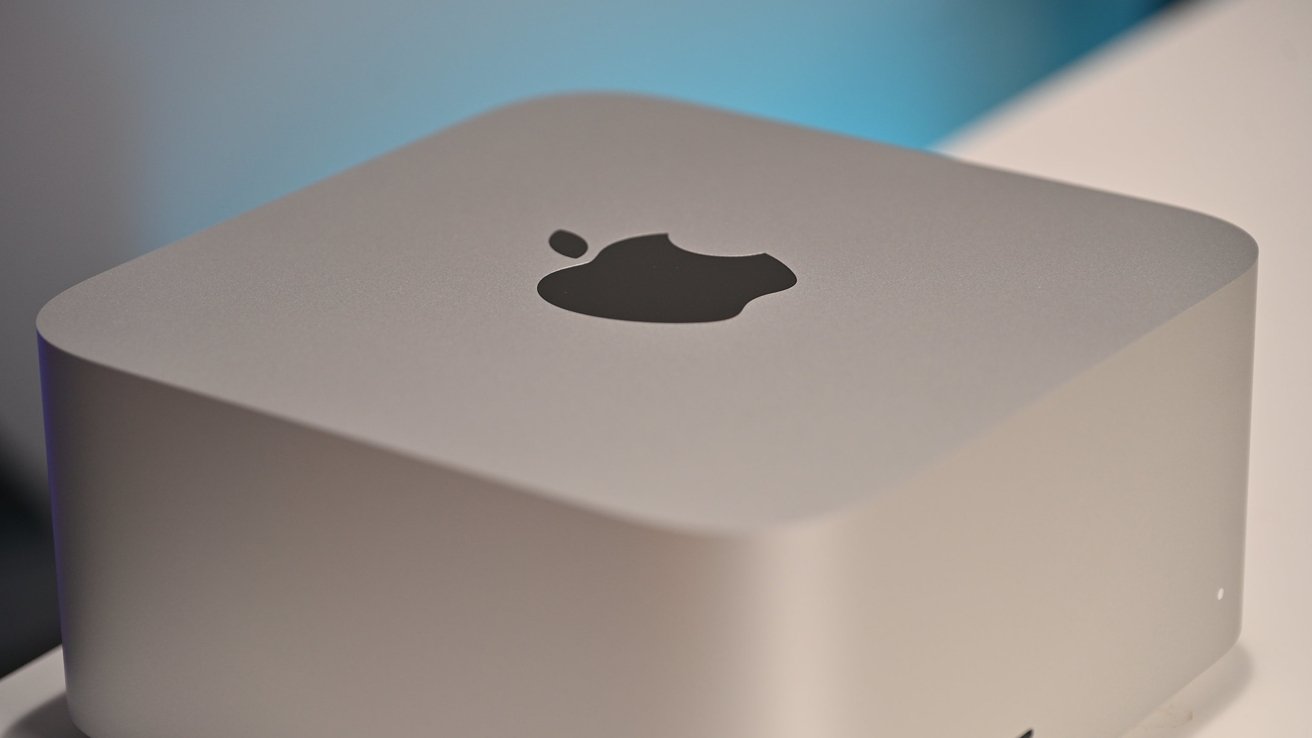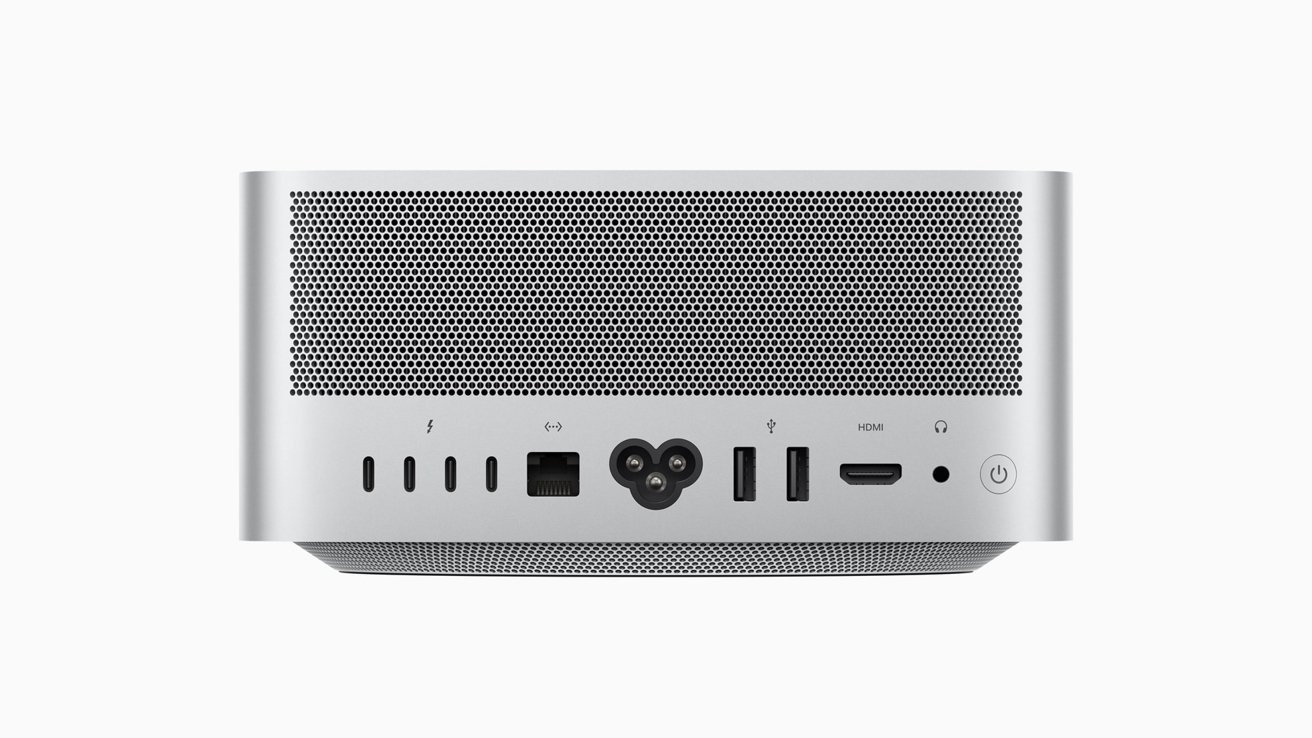Apple's M3 Ultra unlocks next-level power for AI, graphics & 3D rendering
Apple's M3 Ultra is its most powerful chip yet, delivering speed, advanced AI capabilities, and efficiency. Here's how it breaks down.

Mac Studio
The M3 Ultra is built using Apple's UltraFusion architecture, which links two M3 Max dies over 10,000 high-speed connections. The design allows the chip to operate as a single unit, delivering performance while maintaining energy efficiency.
With a 32-core CPU, 80-core GPU, and double the Neural Engine cores, the M3 Ultra is designed to handle demanding tasks.
According to Apple, the chip delivers 1.5 times the performance of the M2 Ultra and up to 2.6 times that of the M1 Ultra. The new GPU features dynamic caching, hardware-accelerated mesh shading, and ray tracing, making it well-suited for graphics-intensive tasks like 3D rendering and gaming.
Time will tell, of course. We're expecting to see benchmarks of the new chip within a week.
AI-ready with massive memory
Apple designed the M3 Ultra, like its other recent chips, with artificial intelligence in mind. Its 32-core Neural Engine accelerates machine learning and AI workloads, making it capable of running large language models with over 600 billion parameters directly on a Mac.
The chip also supports up to 512GB of unified memory, surpassing workstation graphics cards in capacity. This eliminates bottlenecks for professionals working on AI development, video editing, and high-end 3D modeling.
Thunderbolt 5 and advanced connectivity
With the introduction of Thunderbolt 5, the M3 Ultra enables data transfer speeds of up to 120 gigabits per second, more than double the bandwidth of Thunderbolt 4. Each Thunderbolt 5 port is backed by a custom controller, ensuring dedicated bandwidth for high-performance workflows.

Each Thunderbolt 5 port on Mac Studio is supported by its own custom-designed controller directly on M3 Ultra. Image credit: Apple
With Thunderbolt 5, the Mac Studio is ready for high-performance workflows, allowing pros to move massive files and power external displays.
Built-in security and energy efficiency
Apple continues its emphasis on security with the M3 Ultra, featuring an advanced Secure Enclave and hardware-verified secure boot. The chip also integrates dedicated video encoding engines, supporting multiple 8K ProRes video streams simultaneously.
Despite its power, the M3 Ultra maintains Apple's energy efficiency standards. The company aims for carbon neutrality across its entire footprint by 2030, and the energy-efficient design of the M3 Ultra contributes to reducing the overall environmental impact of Apple's devices.
Apple's M3 Ultra sets a new benchmark for personal computing, offering extreme performance for AI, creative workflows, and high-bandwidth tasks. With its advanced architecture, massive memory support, and Thunderbolt 5, it further cements Apple Silicon as the leader in desktop computing.
Apple isn't slowing down
Apple's M2 Ultra, introduced in June 2023, represented a significant advancement in the company's silicon lineup. Built using TSMC's 5-nanometer process, the M2 Ultra featured a 24-core CPU, comprising 16 performance cores and eight efficiency cores, and a GPU configurable up to 76 cores.
The M2 Ultra also included a 32-core Neural Engine capable of 31.6 trillion operations per second, delivering 40% faster performance than its predecessor, the M1 Ultra.
Looking ahead, Apple hasn't officially announced an M4 Ultra, but the M4 chip is expected to arrive in future Mac products later in 2025. If Apple follows its usual pattern, M4 Ultra will likely arrive in 2026, featuring an even more advanced neural engine, improved efficiency, and possibly support for faster on-device AI models.
It's also a possibility for Apple to differentiate an expected Mac Pro from the Mac Studio. If the M4 Ultra is only available in that Mac Pro, that drives purchasers to that unit, more than for just PCI-E.
With M3 Ultra, Apple has solidified its lead in workstation-class computing, setting the stage for what's next. M4 Ultra will bring another leap in AI performance and will include greater power efficiency.
Read on AppleInsider

Comments
Apple's statement that not every generation of M family of chips will have an Ultra model is a PR or marketing convenience. I think it behooves them to have silicon bridge ports (UltraFusion) along the edge of Max chips regardless. Whether they ship an Ultra version is depending on product update schedules, the state of their high performance computing (HPC) customers and what they are doing (ie, market opportunities), and perhaps the state of HPC software on macOS at the time. So, I think a M4 Max design with an UltraFusion port is there. They have just haven't fabbed it with it there. If the circumstances are there, I think they can have it fabbed with it just like the M3 Ultra.
On a side note, for the M3 Ultra to support 512 GB LPDDR, they are getting 32 GByte LPDDR5X from Samsung, Micron or SK Hynix. 16 of those make for 512 GB. Two 32 GByte packages inside each "RAM" package next to the SoC chip. Either that or they are daisy chaining two 16 GB LPDDR RAM packages to make it 32 GByte per 16 bit channel of LPDDR5. Don't think you can do that for LPDDR? So, the former.
It does mean that 256 GB LPDDR RAM for the M5 Max generation is possible. It can go all the way down. M Pro SoCs can go to 128 GB, M SoCs can go to 64 GB, A series SoCs can go to 32 GB RAM. Probably need another 3 years for these 32 GB LPDDR RAM packages to become affordable and be able to go into phones.